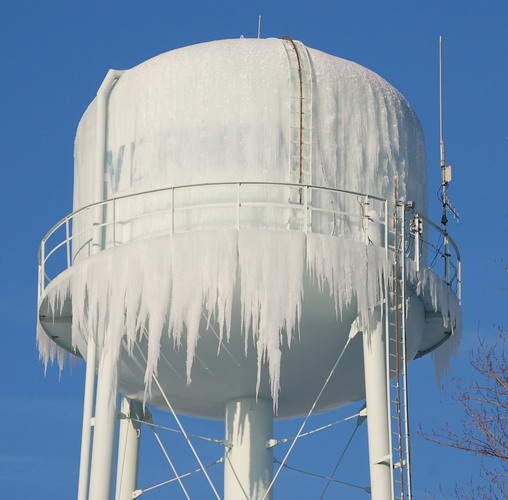Every winter, water utilities across the United States  and Canada deal with the challenges of cold weather, including main breaks and equipment outages. While these emergencies come without warning, they are obvious and visible when they do occur. But in other parts of the water distribution system, cold weather can create risk that is hidden from view: ice formation inside water storage tanks.
and Canada deal with the challenges of cold weather, including main breaks and equipment outages. While these emergencies come without warning, they are obvious and visible when they do occur. But in other parts of the water distribution system, cold weather can create risk that is hidden from view: ice formation inside water storage tanks.
Often, the only time operators realize they have a problem with ice in their tanks is when it’s too late: after a tank’s interior is damaged or when the tank wall is punctured. Few operators climb and inspect their tanks in winter, so the extent of ice formation inside of water storage tanks is often unknown. Below we have compiled five factors that indicate your tank is at risk for ice formation.

